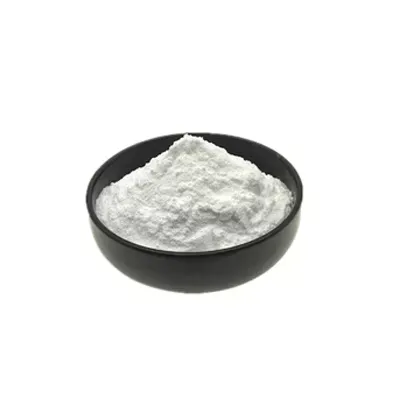Warning: Undefined array key "title" in /home/www/wwwroot/HTML/www.exportstart.com/wp-content/themes/1198/header.php on line 6
Warning: Undefined array key "file" in /home/www/wwwroot/HTML/www.exportstart.com/wp-content/themes/1198/header.php on line 7
Warning: Undefined array key "title" in /home/www/wwwroot/HTML/www.exportstart.com/wp-content/themes/1198/header.php on line 7
Warning: Undefined array key "title" in /home/www/wwwroot/HTML/www.exportstart.com/wp-content/themes/1198/header.php on line 7
- Afrikaans
- Albanian
- Amharic
- Arabic
- Armenian
- Azerbaijani
- Basque
- Belarusian
- Bengali
- Bosnian
- Bulgarian
- Catalan
- Cebuano
- China
- China (Taiwan)
- Corsican
- Croatian
- Czech
- Danish
- Dutch
- English
- Esperanto
- Estonian
- Finnish
- French
- Frisian
- Galician
- Georgian
- German
- Greek
- Gujarati
- Haitian Creole
- hausa
- hawaiian
- Hebrew
- Hindi
- Miao
- Hungarian
- Icelandic
- igbo
- Indonesian
- irish
- Italian
- Japanese
- Javanese
- Kannada
- kazakh
- Khmer
- Rwandese
- Korean
- Kurdish
- Kyrgyz
- Lao
- Latin
- Latvian
- Lithuanian
- Luxembourgish
- Macedonian
- Malgashi
- Malay
- Malayalam
- Maltese
- Maori
- Marathi
- Mongolian
- Myanmar
- Nepali
- Norwegian
- Norwegian
- Occitan
- Pashto
- Persian
- Polish
- Portuguese
- Punjabi
- Romanian
- Russian
- Samoan
- Scottish Gaelic
- Serbian
- Sesotho
- Shona
- Sindhi
- Sinhala
- Slovak
- Slovenian
- Somali
- Spanish
- Sundanese
- Swahili
- Swedish
- Tagalog
- Tajik
- Tamil
- Tatar
- Telugu
- Thai
- Turkish
- Turkmen
- Ukrainian
- Urdu
- Uighur
- Uzbek
- Vietnamese
- Welsh
- Bantu
- Yiddish
- Yoruba
- Zulu
Dis . 31, 2024 20:29 Back to list
Exploring the Unique Properties of Xanthan Gum in Culinary and Industrial Applications
Xanthan Gum A Versatile Ingredient with Growing Popularity
Xanthan gum, a natural polysaccharide, has gained considerable attention in recent years due to its wide range of applications across various industries, including food, cosmetics, and pharmaceuticals. Originating from the fermentation of the bacterium Xanthomonas campestris, xanthan gum is renowned for its thickening and stabilizing properties, making it an essential ingredient in many products.
In the food industry, xanthan gum plays a crucial role in enhancing texture and consistency. As a thickening agent, it allows for the smooth and creamy texture of sauces, dressings, and yogurt. It is particularly valued in gluten-free baking, where it helps to mimic the elasticity and chewiness provided by gluten. This is especially important for individuals with celiac disease or gluten intolerance, as it enables them to enjoy a variety of baked goods without compromising on quality.
Moreover, xanthan gum is often used in salad dressings to prevent the separation of oil and vinegar, providing a uniform consistency that consumers appreciate. Its ability to retain moisture also makes it a valuable addition to frozen products, ensuring that their texture remains pleasing even after thawing. This is crucial for maintaining the quality and taste of the food products that consumers have come to expect.
Beyond its culinary applications, xanthan gum finds considerable use in the cosmetics and personal care industry. It acts as a thickening agent in lotions, creams, and gels, improving the texture and stability of these products. Its unique properties allow it to enhance the spreadability of creams and serums while maintaining a lightweight feel. As consumers increasingly seek natural and clean-label products, xanthan gum stands out as a safe and effective ingredient that aligns with modern preferences.
xanthan gum ísland

In the pharmaceutical field, xanthan gum has been utilized in various formulations, including suspensions and emulsions. Its ability to improve the stability and viscosity of liquid medications assists in ensuring proper drug delivery. Additionally, xanthan gum is used in some controlled-release drug formulations, where its viscosity-modifying properties can enhance the bioavailability of active pharmaceutical ingredients.
Despite its numerous benefits, it is essential to consider xanthan gum's environmental implications. As with any ingredient, the production process can impact the environment, particularly when it involves large-scale fermentation. However, efforts are being made to find sustainable production methods, including utilizing renewable resources and reducing waste during manufacturing.
Furthermore, xanthan gum’s adaptability has fueled the development of alternative applications. For instance, it has shown potential in the agricultural sector as a soil conditioner and in water retention strategies for crops. This versatility highlights the need for continued research into xanthan gum’s properties and its potential applications.
In conclusion, xanthan gum is an ingredient that has transcended its origins, finding a place in a myriad of industries. From its pivotal role in enhancing food products to its applications in cosmetics and pharmaceuticals, xanthan gum's versatility is undeniable. As consumer preferences continue to shift toward natural and sustainable options, xanthan gum is poised to remain a staple in various formulations, promising to contribute to innovation and quality across multiple sectors. With ongoing research and development, the future of xanthan gum applications appears bright, offering new avenues for exploration and integration into everyday products.
Latest news
-
Certifications for Vegetarian and Xanthan Gum Vegetarian
NewsJun.17,2025
-
Sustainability Trends Reshaping the SLES N70 Market
NewsJun.17,2025
-
Propylene Glycol Use in Vaccines: Balancing Function and Perception
NewsJun.17,2025
-
Petroleum Jelly in Skincare: Balancing Benefits and Backlash
NewsJun.17,2025
-
Energy Price Volatility and Ripple Effect on Caprolactam Markets
NewsJun.17,2025
-
Spectroscopic Techniques for Adipic Acid Molecular Weight
NewsJun.17,2025

